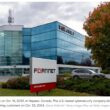Dynamic Spectrum Arbitrage is the key for a sustainable FirstNet
By Chris Moore, Rivada Networks
There have been many heroes in the battle to secure the funds and spectrum necessary to stand up an interoperable nationwide wireless public safety broadband network. Last year, President Barack Obama, Vice President Joe Biden, members of Congress, public-safety leaders, administration officials, congressional staff, industry leaders and many others all came together in an unprecedented effort to develop a vision for the future of public safety communications. While this effort was historic, we all must move quickly to build out the network or risk failure of one of the most important nationwide public-safety initiatives ever undertaken.
In the Middle Class Tax Relief and Job Creation Act of 2012 (MCTRJCA), the federal government created the First Responder Network Authority (FirstNet) to build, operate and maintain an interoperable nationwide wireless public safety broadband network. As part of this legislation, Congress entrusted $7 billion and 20 MHz of extremely valuable radio spectrum to FirstNet along with some ground rules for building the nationwide network. Now is the time for all involved parties to move quickly and execute on that mission.
To make this network a reality and keep it sustainable, strong leadership and a dedicated funding stream are critical for success. On the leadership front, we are fortunate to have a FirstNet board of directors that is both highly experienced and dedicated to the public-safety mission. Recently, the board appointed a strong general manager who clearly understands the urgency of getting this network built and is not afraid to do what it takes to make it happen.
On the financial front, however, there are still many questions about how to fund the network. One thing is certain: everyone involved with FirstNet realizes that $7 billion ($2 billion now and another $5 billion in 2015-16) is not nearly enough money to get the job done. So, how does FirstNet generate the necessary funds to build the network? And, what is the best business model that can keep the network sustainable over the long term?
Public-Private Partnerships
In the language of the MCTRJCA, Congress acknowledged the need for FirstNet to enter into Public-Private Partnerships (PPP) to fulfill its mission. As FirstNet is a non-profit entity, the legislation specifies that any profit derived from these partnerships must be returned to FirstNet for use in building, operating and maintaining the nationwide network.
These partnerships likely will include FirstNet leveraging existing public-safety communications infrastructure and backhaul assets with that of other entities including utilities, railroads, and existing wireless carriers.
In addition to these types of cost-saving partnerships, the legislation also allows for the secondary use of the public-safety spectrum when it is not needed by public safety and subject to “ruthless preemption” when it is.
In other words, public safety gets immediate access to all of its bandwidth when it needs it. When public safety doesn’t need all of this bandwidth, FirstNet can lease it to qualified market participants and create a reliable revenue stream that will fund the nationwide network. This is the part of the financial equation that is truly necessary for sustainability.
Without a doubt, there will be periods when public safety will need access to all of its 20 MHz of bandwidth at a major emergency. What is equally as clear is that public safety will not need all of its bandwidth all of the time in every market in the country.
The question then becomes: how do you effectively monetize this extremely valuable resource and manage it on a real-time basis? This has been the difficult question until recently.
The answer lies with Dynamic Spectrum Arbitrage—Tiered Priority Access (DSA-TPA), which is the real-time leasing (via competitive auction) of unused radio resource capacity to willing and qualified customers subject to “ruthless preemption.”
With newly available technology from Rivada Networks, DSA-TPA lets bandwidth be commoditized and leased in an open marketplace, down to the granularity level of a sub-sector of an individual base station.
In this model, a specific allocation of bandwidth can be leased on a secondary basis to a buyer for a specific period of time in a specific geographic area. Using this technology, FirstNet can lease excess capacity on its network in every market in the country, thus providing a stable and substantial revenue stream to build, operate and maintain the network.
Will there be customers for secondary use of spectrum?
With the explosion of broadband devices, industry and government agencies like the FCC have stated that the commercial wireless carriers are facing a critical spectrum crunch, particularly in the major metropolitan markets.
Using DSA—TPA, commercial carriers will have the ability to bid for mission-critical-grade bandwidth to handle peak demand in their most impacted markets without having to invest in additional significant capital outlays. For example, a wireless carrier that has chronic network congestion during commute hours on the freeways could lease bandwidth from FirstNet with seamless handoffs between Band 14 and their own commercial bands.
What has also been widely acknowledged is that many rural areas of our country that currently do not have access to high-speed broadband. With FirstNet providing a nationwide LTE footprint, existing commercial wireless carriers could enter previously unserved communities without having to deploy their own costly infrastructure.
Private financing with minimal risk to FirstNet
One of the quickest, most cost-effective ways to build the nationwide network is to utilize private debt financing. Investment banks and institutional lenders are looking for high-quality infrastructure projects that have a solid business case behind them. FirstNet is just such a project.
One of the key factors in making this business model viable is that interest rates are at an all-time low. It also should be noted that the collateral for the debt would not be the spectrum itself or even the network infrastructure; rather it would be the revenue generated from the secondary use of the public safety bandwidth. Thus, there is minimal risk to FirstNet or its mission.
What does DSA—TPA provide to FirstNet?
Rivada’s DSA—TPA would provide FirstNet with the following:
1. A public-private partnership financial model that privately funds the nationwide network deployment, operations and upgrades at no cost to the taxpayer, without compromising ongoing operation of—and title to—the network infrastructure or spectrum.
2. Complete public-safety ownership and control of the bandwidth and infrastructure, including “ruthless preemption” to reclaim instantly all 20 MHz of public safety spectrum, when needed.
3. The greatest possible control, coverage, load capacity and survivability for the nationwide public-safety wireless broadband network.
4. Regular refresh and updates of equipment and handsets, allowing public safety to keep pace with and help drive 4G innovation.
5. A “carrier agnostic” regional mobile broadband LTE footprint allowing for real-time competitive wholesale access—reasonably expected to benefit from the ever-increasing “scarcity” value of bandwidth—without surrendering the upside potential to an individual entity or a group of commercial entities.
6. A method to provide existing and new industry entrants a resource that will further catalyze new business models, innovation and job creation.
DSA—TPA is the key to FirstNet sustainability
As the FirstNet board evaluates the various business models that have been proposed, the DSA—TPA model should be considered carefully, as it is the only model that can provide the revenue stream necessary to fulfill the promise of a truly nationwide wireless public-safety broadband network.
Above all else, we all must all work together to ensure that this network gets built.
Chris Moore is a 31-year law enforcement veteran, recently retiring as chief of police for the San Jose Police Department. He served as the founding chairman of the Public Safety Alliance. Today, he is senior vice president for Rivada Networks and can be contacted at [email protected].















